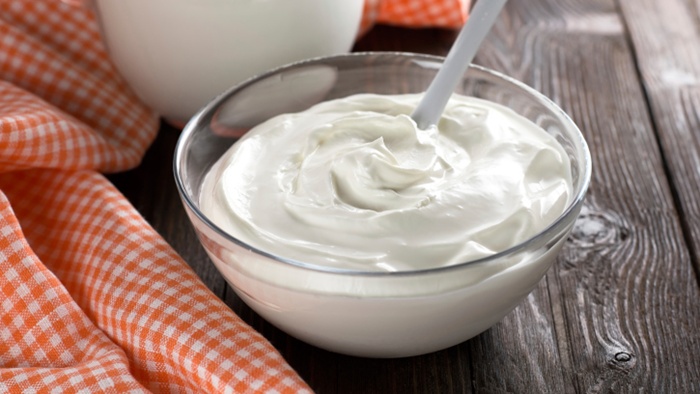
You see a tub of Greek yogurt in the fridge. You envision the decadent creamy swirls as the ultimate not-so-sinful indulgence. It’s packed with protein, it certainly doesn’t taste as sweet or fake as some yogurts or whipped desserts, so that means it is low-fat, low-sugar and guilt-free, right?
As with many trendy items, Greek yogurt comes with its own potential for imposters. It skyrocketed to superfood status in the United States, and sales blasted off the charts, projected to reach $9.3 billion by 2017; that’s up from an impressive $7.3 billion in 2012.
Greek Yogurt Bonus Points
The protein in Greek yogurt elevated its status as a superfood: Six ounces holds about as much lean protein as three ounces of lean meat. And if you aren’t big on meat, or just don’t have the time to prepare it, pulling the tub of yogurt out of the fridge is an easy fix. Protein is good for us! A 2013 study in the Journal of the American Medical Association showed a diet in lean protein is a healthy way to ward off heart disease and lower the risk of weight gain.
Real Story Behind the Profits
Along with all that cash funneled into the pockets of American yogurt producers comes cause for concern: How healthy is Greek yogurt, really? (Smart marketing can dupe the best of us.)
The answer is in its true naked form, Greek yogurt is healthy. But the devil is in the details—of the marketing and production process.
The term “Greek” when it comes to yogurt has remained unregulated, and the result can be a costly variation of the standard yogurt filled with sugar, fat and other fillers. What makes Greek yogurt so healthy stems from its production.
The authentic process, originating from Greece, strains out the whey protein which leaves the yogurt in a more creamy original state, often free of sugar and with fewer carbs than the regular kind. The result is a dessert-like texture, without the downfalls to your health and waistline.
Some Companies Like to Cut Corners
Profit is such a driving force. Equipment required for authentic processing is expensive, and because the term “Greek” isn’t regulated, companies can flub the details. They try to duplicate the signature texture using cornstarch or other thickening agents.
So your best bet is to not rely on the product name, but to check the product label for additives that weigh down the product, often filtering the sugar, carbs and fat back into the yogurt. And if you are paying up to $3 more per tub, you want to be able to justify the contents!
Don’t swear off the Greeks just yet. There are excellent brands of Greek yogurt on the market that deliver the quality and authenticity. The higher price should come as a result of the pure ingredients made the proper way—not just a Greek label slapped on the front of the same old stuff you were trying to avoid.
Sources:
“Greek Yogurt Continues Its Sales Growth Marathon,” Yahoo! Finance, April 8, 2013; http://finance.yahoo.com/news/
“What is Greek Yogurt | How is Greek Yogurt Made,” How to Make Greek Yogurt | Easy Homemade Greek Yogurt web site, July 22, 2013; http://www.makegreekyogurt.
Bray, G.A., et al., “Effect of dietary protein content on weight gain, energy expenditure, and body composition during overeating: a randomized controlled trial,” JAMA January 4, 2012; 307(1): 47–55.
National Dairy Retail Report, Volume 18(16), Agricultural Marketing Service web site, April 17, 2014; http://www.ams.usda.gov/












